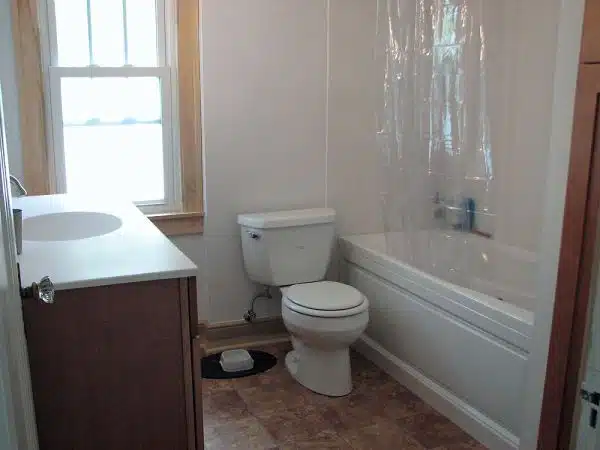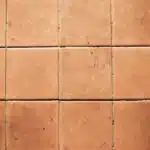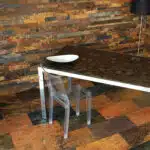Tiling a bathroom floor can be an excellent way to upgrade the look and feel of your bathroom while also improving its functionality. When done correctly, tiling a bathroom floor can provide a durable and waterproof surface that is easy to clean and maintain. However, for those who are new to the DIY approach or have limited experience with home improvement projects, tiling a bathroom floor can seem like a daunting task. In this article, we will explore the step-by-step process of how to tile a bathroom floor, from selecting the right materials to preparing the surface and laying the tiles.
Before diving into the process of tiling a bathroom floor, it is essential to understand that this is not an overnight project. It requires careful planning, attention to detail, and patience. However, with proper guidance and preparation, anyone can successfully tile their bathroom floor. This article will provide you with all the necessary information you need to take on this project confidently. Whether you’re looking to update your bathroom’s appearance or add value to your home, learning how to tile your bathroom floor is an excellent first step towards achieving your goals.
Assessing Your Bathroom Floor
Before beginning any tiling project, it is crucial to assess the bathroom floor. Common issues include uneven surfaces, cracks, and water damage. It is essential to address these problems before starting the tiling process as they can affect the final result.
If you notice that your bathroom floor has uneven surfaces or cracks, DIY alternatives may exist to remedy these issues. For example, using a leveling compound can help even out an uneven surface, while filling in cracks with epoxy can prevent further damage. However, if the damage is extensive or you are unsure of how to proceed, it may be best to consult a professional.
Measuring and calculating materials are vital steps in any tiling project. Before purchasing tiles or any other necessary materials, measure the length and width of your bathroom floor accurately. This measurement will help determine how much tile you need for the project. Additionally, consider purchasing extra tiles in case of breakage or errors during installation. By carefully measuring and calculating materials upfront, you can avoid delays and extra costs down the line.
Measuring And Calculating Materials
One of the critical steps in tiling a bathroom floor is calculating the coverage area and estimating the costs. It is essential to measure accurately to avoid overbuying or underbuying materials, which can cause delays and additional expenses. According to a survey conducted by HomeAdvisor, the average cost of tiling a bathroom floor ranges from $800 to $2,500, depending on the size of the bathroom and the type of tiles used.
To calculate the coverage area, measure the length and width of your bathroom floor. Multiply these measurements to get the total square footage. Don’t forget to take into account any fixtures or obstructions that may affect tile placement, such as toilets or vanities. Next, calculate how much tile you need by dividing your total square footage by each tile’s size. It is recommended to add an extra 10% for waste and future replacement needs.
After calculating coverage area and determining how much tile you need, it’s now time to estimate costs. The cost will vary depending on several factors such as material quality, labor charges if you are hiring professionals, and other miscellaneous expenses like grout or adhesive. You can use online calculators that factor in all these variables or consult with a professional contractor for more accurate estimates. By calculating coverage area and estimating costs beforehand, you can prepare yourself for the overall expense involved in tiling your bathroom floor.
Calculating coverage area and estimating costs are crucial steps when planning for a bathroom floor tile project. Doing so will help you avoid costly mistakes like overbuying materials or running out before finishing your project. In our next section about choosing the right tiles, we will discuss various types of tiles suitable for different bathrooms’ styles and sizes.
Choosing The Right Tiles
Now that you have measured and calculated the materials needed for your bathroom floor tiling project, it is time to move on to the next step. Choosing the right tiles can make or break the overall look of your bathroom. There are various factors to consider when selecting tiles, such as tile patterns and color schemes.
Tile patterns come in a wide range of options, from classic geometric shapes to intricate designs. When selecting a tile pattern, it is important to consider the size of your bathroom and the furniture layout. For instance, larger bathrooms can accommodate more complex tile patterns while small ones require simpler designs. Additionally, choosing a tile pattern with contrasting colors can add depth and character to your bathroom space.
Color schemes play an essential role in creating a cohesive design for your bathroom. Consider the existing colors in your bathroom such as wall paint or vanity finishes when selecting tiles. A general rule of thumb is to choose complimentary colors or shades that are within the same color family for a harmonious aesthetic. However, don’t be afraid to experiment with bold color choices as they can bring life and personality into any space.
Now that you have an idea of what kind of tiles you want for your bathroom floor, it’s time to prepare your tools and materials. Ensure that you have all necessary equipment such as tile cutters, spacers, adhesive materials, grout mixers, and measuring tools before beginning the tiling process. Proper preparation is key in executing a successful tiling project for your bathroom floor.
Preparing Your Tools And Materials
Before beginning your bathroom floor tiling project, it is essential to gather all the necessary tools and materials. Having everything on hand will make the process smoother and more efficient. Here are some of the items you will need:
- Tile saw or tile cutter
- Notched trowel
- Measuring tape
- Level
- Grout float
Selecting adhesives can be overwhelming, but it is crucial to choose the right one for your specific tile type and subfloor. Cement-based mortar is a popular choice for ceramic and porcelain tiles, while mastic adhesive is better suited for light-duty applications with smaller tiles. Make sure to read the manufacturer’s recommendations before making your selection.
Choosing grout colors may seem like a small detail, but it can have a significant impact on the overall look of your bathroom floor. Light-colored grout makes spaces appear larger and brighter, while dark-colored grout adds depth and contrast. Consider using a color chart or consulting with a professional to find the perfect shade for your design.
As you move forward with your bathroom floor tiling project, remember that preparation is key. By selecting the proper adhesives and choosing complementary grout colors, you’ll be one step closer to achieving your desired outcome. In the next section, we will discuss how to remove old flooring before beginning your tiling project.
Removing Old Flooring
To start tiling a bathroom floor, you must first remove the old flooring. This can be done by either hiring a professional or doing it yourself. If you choose to do it yourself, there are a few tools that you will need. These include gloves, safety glasses, a pry bar, hammer, chisel, and a scraper.
When removing the old flooring, it’s important to be cautious and take your time. Wear protective gear to avoid any injury during the process. Use the pry bar and hammer to loosen any nails or adhesive holding the flooring in place. Use the chisel and scraper to remove any remaining adhesive or debris on the subfloor.
While DIY is an option for removing old flooring, it can be a difficult task depending on how much work needs to be done. If you’re unsure of your abilities, it’s best to hire a professional who has experience in this field. This will ensure that everything is done properly and efficiently so that you can move onto preparing the subfloor for tiling.
Preparing The Subfloor
Accurately measuring the room prior to beginning the project is crucial to the success of any tiling project. Any existing flooring must be removed before any new material is installed. The subfloor must be leveled to ensure that tiles are laid evenly and properly. To level the subfloor, check for any dips or humps in the flooring and fill them with a patching material. A self-leveling compound can also be used to fill in any low spots. The subfloor must be clean and dry prior to the installation of the new tile. Lastly, it is important to ensure that the subfloor is structurally sound and in good condition.
Measuring The Room
Measuring the Room is an essential step in preparing the subfloor for tiling a bathroom floor. Measuring accuracy is crucial to ensure that you purchase the right amount of tiles and avoid wasting time and money. Before taking any measurements, it’s best to remove all furniture or fixtures from the bathroom to get accurate readings.
Floor irregularities are common in most bathrooms, and measuring them will help you determine where to begin laying your tiles. Use a long straightedge, such as a level or a piece of wood, to check for dips or bumps in the floor. Make sure to measure at least two points along each wall and diagonally across the room for accuracy. Record all measurements on paper and double-check them before purchasing your tiles.
In conclusion, measuring the room accurately is a fundamental step in preparing your bathroom floor for tiling. It can be tempting to skip this step, but doing so can lead to costly mistakes and wasted time. By taking the time to measure correctly and record all measurements, you’ll be well on your way to creating a beautiful new bathroom floor that you’ll enjoy for years to come.
Removing Old Flooring
Before you start laying tiles on your bathroom floor, it’s important to prepare the subfloor properly. One of the essential steps in this process is removing old flooring. By doing so, you’ll create a smooth and level surface for your new tiles to adhere to, ensuring that they will last longer and look better.
To remove old flooring, you’ll need some basic tools such as a pry bar, hammer, and utility knife. Depending on the type of flooring you have, you may also need specialized tools like a floor scraper or tile chisel. It’s essential to take safety precautions when removing old flooring to avoid injury. Wear protective gear like gloves and goggles, and make sure that no one else is in the room while you’re working.
Once you’ve removed all the old flooring and debris from the subfloor, inspect it for any damage or irregularities. If there are any cracks or holes in the subfloor, fill them with leveling compound or plywood before proceeding with tile installation. By taking these steps to prepare your subfloor properly, you’ll ensure that your bathroom tiles will look great and last for years to come.
Leveling The Subfloor
To ensure that your bathroom tiles are installed properly and last for years to come, it’s essential to prepare the subfloor adequately. One of the crucial steps in this process is leveling the subfloor. A level subfloor is necessary for creating a smooth and even surface for your tiles to adhere to. If you skip this step or do it incorrectly, your tiles may crack, become loose, or buckle over time.
To level the subfloor, you’ll need tools such as a level, chalk line, trowel, and leveling compound. The first step is to use a level and chalk line to mark high and low spots on the floor. After marking these areas, spread the leveling compound with a trowel on the low spots until they’re even with the high spots. Allow it to dry completely before proceeding with tile installation.
One of the most common mistakes people make when leveling their subfloor is failing to remove all debris from the surface before applying leveling compound. This can cause unevenness in the final result and lead to issues with tile installation. Another mistake is using too much or too little leveling compound, which can create bumps or valleys in the floor. By being mindful of these mistakes and taking appropriate precautions while leveling your subfloor, you’ll set yourself up for success when installing your bathroom tiles.
Applying Adhesive
Before applying adhesive to your bathroom floor, it’s essential to prepare the surface properly. Make sure that the surface is clean, dry, and free from any debris. Any loose tiles or old adhesive must be removed, and the floor should be even. If there are any uneven patches on the surface, use a self-leveling compound to level them out.
When mixing your adhesive, follow the manufacturer’s instructions carefully. Mix only as much as you can use within an hour. Spread a thin layer of adhesive onto the floor using a notched trowel in one direction. Then go over it again in another direction to ensure that there are no gaps or air pockets.
Tips for applying adhesive include starting in one corner of the room and working your way towards the entrance so that you don’t trap yourself in a corner. Troubleshooting may involve adjusting the consistency of your adhesive if it’s too thick or too runny. Also, make sure that you don’t spread too much adhesive at once as this could cause it to dry before you lay down your tiles.
Transition into laying your first tiles by mentioning that once you’ve applied adhesive to the entire floor area, it’s time to start laying your tiles.
Laying The First Tiles
Before laying the first tiles, it is important to have a clear tile layout plan. This will help ensure that the tile patterns are consistent and aesthetically pleasing. To create a tile layout plan, use a straight edge and chalk line to mark out the center of the room in both directions. Next, dry lay the tiles starting from the center point and working your way outwards towards the edges of the room.
When laying the first tiles, it is crucial to ensure they are level and flat. This can be achieved by spreading a layer of thinset mortar onto the floor using a notched trowel. Carefully place each tile onto the mortar, pressing down firmly and twisting slightly to ensure it is securely attached. Use spacers between each tile to maintain consistent spacing and allow for grout lines.
Tile patterns can greatly enhance the overall look of your bathroom floor. When choosing a pattern, consider factors such as tile size, shape, and color. Popular patterns include diagonal or herringbone layouts, as well as traditional running bond or basketweave patterns. Experiment with different options before making a final decision to find a pattern that best complements your bathroom’s design aesthetic.
To continue with laying tiles in your bathroom floor project, cutting tiles to fit is an essential step that ensures all areas of your floor are covered accurately without leaving any gaps or unevenness behind.
Cutting Tiles To Fit
Once you have measured and marked the tiles that need to be cut, it’s time to start cutting them. The most efficient way of cutting tiles is by using tile cutters. Tile cutters are designed specifically for this purpose and can make straight cuts quickly and accurately. They work by scoring a line on the surface of the tile and then snapping it along that line.
Before you start cutting, it’s essential to create a tile pattern to ensure that the design is consistent throughout the bathroom floor. This can be achieved by arranging full tiles on the floor before making any cuts. Once you have created your design, mark any tiles that need to be trimmed or cut to size.
When using tile cutters, always wear safety goggles and gloves. It’s also important to follow the manufacturer’s instructions carefully. Place each tile in the cutter, aligning it with the guide marks for accuracy, and then apply pressure on the handle to score a line across its surface. Finally, snap off any excess using the breaker bar attached to the cutter. With all your tiles cut and ready to go, it’s time to move on to laying the remaining tiles in place.
Laying The Remaining Tiles
- Once the main area of the bathroom floor has been tiled, it is necessary to cut the remaining tiles to fit around the edges of the room.
- Specialised tile cutting tools and the correct adhesive must be used to ensure a secure and watertight installation.
- When cutting tiles to fit, it is important to measure twice and cut once to ensure the best results.
- Once the tiles have been cut and laid, the appropriate adhesive can be used to secure them to the floor.
- Care must be taken to ensure the adhesive is spread evenly over the entire surface of the tile.
- Once the adhesive has dried, grout can be used to fill the gaps between the tiles, creating a waterproof seal and completing the bathroom floor.
Cutting Tiles To Fit
When it comes to laying the remaining tiles in your bathroom, cutting tiles to fit can be a challenging task. However, with the right tile cutting techniques and tools, you can easily achieve a flawless finish. There are various tile cutting tools that you can use, such as a manual tile cutter, wet saw or angle grinder.
A manual tile cutter is the most common tool for cutting tiles to size. It’s ideal for straight cuts but not suitable for complex cuts or curves. On the other hand, a wet saw is perfect for making intricate cuts and curves. It uses water to cool down the blade and prevent it from overheating while slicing through tough materials like porcelain and ceramic. Lastly, an angle grinder is great for cutting curves in tiles or making small adjustments on corners and edges.
To ensure precision when using any of these tools, mark where you want to make cuts using a pencil or marker. You should also wear protective gear such as goggles and gloves when working with power tools. Remember that practice makes perfect so don’t be afraid to experiment on scrap pieces before cutting actual tiles.
In conclusion, cutting tiles is an essential part of tiling a bathroom floor. With proper tile cutting techniques and tools like the manual tile cutter, wet saw or angle grinder, you can achieve professional-looking results without breaking your budget. Just remember to take safety precautions seriously and practice on scrap pieces before tackling your project head-on!
Applying Adhesive
Now that you have successfully cut the tiles to fit, it’s time to apply adhesive and lay them onto the bathroom floor. There are different types of adhesives available, including pre-mixed adhesives and powdered adhesives that require mixing with water. Pre-mixed adhesives are easy to use but may not be suitable for large areas. On the other hand, powdered adhesives provide a stronger bond and are better suited for larger installations.
Before applying adhesive, make sure that your bathroom floor is clean and free from any debris or dust. You can use a vacuum cleaner or a damp cloth to remove any dirt or dust particles. Next, mix the adhesive according to the manufacturer’s instructions and start spreading it onto the floor using a notched trowel. The size of the trowel will depend on the size of the tiles you’re using.
When applying adhesive, work in small sections at a time to ensure that the adhesive doesn’t dry out before you lay down your tiles. Once you’ve applied enough adhesive, gently press each tile into place using a slight twisting motion to ensure that it adheres properly. Make sure that each tile is level with those around it before moving on to the next section. Repeat this process until all remaining tiles have been laid onto your bathroom floor in their correct positions.
Grouting The Tiles
Now that all the remaining tiles have been laid onto your bathroom floor, it’s time to move on to the next step: grouting. Grout is a mixture of cement, sand, and water that fills in the gaps between tiles, creating a smooth and seamless finish. Grouting is essential not only for aesthetic reasons but also for durability and stability.
When it comes to grouting your bathroom tiles, there are a few tips and techniques that you should keep in mind. First, make sure that all of your tiles are firmly in place before you begin grouting. If any of them are loose or wobbly, fix them before proceeding. Next, choose a grout color that complements your tile color and style. You can also opt for a contrasting color if you want to create a more dramatic effect.
To apply the grout, use a rubber float or squeegee to spread it evenly over the tile surface at a 45-degree angle. Make sure you work the grout into all of the gaps between the tiles so that they are completely filled. Once you have applied enough grout, use a damp sponge to wipe away excess grout from the surface of the tiles. Repeat this process until all of your tiles have been properly grouted. With these tips and techniques in mind, your bathroom floor will look flawless and professional once complete!
Applying Grout
After successfully laying down the remaining tiles on your bathroom floor, it’s time to apply grout. Grouting is an essential part of tiling as it fills in the gaps between tiles and secures them in place. Mixing grout is a simple process that can be done using a trowel or a mixing paddle attached to an electric drill. Start by adding water to the grout mix and mix thoroughly until you achieve a smooth consistency.
Next, using a rubber float, apply the grout mixture onto the tiled surface at a 45-degree angle, ensuring that all gaps are filled. Be sure to work in sections and avoid covering more than 10 square feet at a time as this will allow you to clean up any excess grout before it dries up. Once done, use a damp sponge to remove any excess grout from the tiles’ surface.
After applying grout, it’s crucial to seal your tiles. Sealing your tiles will prevent water from seeping into the gaps between your tiles and damaging your subfloor. Applying sealant is easy and straightforward – start by selecting a sealant that suits your tile type and follow the manufacturer’s instructions for application. Typically, you’ll need to pour some sealant onto the tiled surface then spread it out evenly with a paintbrush or roller brush. Allow sufficient drying time before walking or placing any objects on top of your newly sealed bathroom floor.
- Protect Your Investment: Sealing your bathroom floor will keep it looking new for years.
- Keep Your Bathroom Clean: With properly sealed floors, cleaning becomes easier and less frequent.
- Prevent Unnecessary Damage: Without proper sealing, water damage can lead to costly repairs.
Now that you’ve applied grout and sealed your bathroom floor tiles, it’s time to move onto cleaning them!
Cleaning And Sealing The Tiles
After installing your bathroom tiles, the next step is to clean and seal them to ensure their longevity. Cleaning your bathroom floor tiles is an essential part of maintaining their aesthetic appeal. Dirt, grime, and water stains can accumulate on the surface of the tiles over time, making them look dull and unattractive. To clean your tiles, you will need a cleaning solution specifically designed for tile surfaces. Avoid using harsh chemicals such as bleach or ammonia that may damage your tiles.
Once you have cleaned your tiles, it’s important to seal them properly to protect them from moisture and stains. Sealing techniques vary depending on the type of tile you have installed. For example, if you have porcelain or ceramic tiles, you can use a penetrating sealer that fills in the pores of the tile to prevent water penetration. If you have natural stone tiles like marble or granite, you may need a surface sealer that provides a protective layer on top of the tile.
When choosing a cleaning solution or sealing technique for your bathroom floor tiles, be sure to follow manufacturer instructions carefully. Using improper methods can lead to damage or discoloration of your tiles. Additionally, make sure that the area is well-ventilated during both cleaning and sealing processes.
Now that your bathroom floor tiles are clean and sealed properly, it’s time to move onto installing baseboards. Baseboards not only add decoration but also protect walls from water damage caused by splashing in the sink or bathtub.
Installing Baseboards
After cleaning and sealing the tiles, it’s time to turn your attention to the baseboards. Baseboard design can greatly impact the overall look of your bathroom floor, so choose wisely. You can opt for a simple and sleek design or something more ornate to match the style of your bathroom.
When it comes to baseboard installation tips, make sure you take accurate measurements before making any cuts. Use a saw to cut the baseboards at a 45-degree angle for corners and ensure they fit snugly against each other. It’s also important to use adhesive or nails to secure the baseboards in place.
Once you’ve installed the baseboards, it’s time for some finishing touches. This includes filling any gaps with caulking and painting or staining the baseboards to match your bathroom decor. Don’t forget to clean up any excess adhesive or paint before admiring your newly tiled bathroom floor with perfectly installed baseboards.
Finishing Touches
Once your bathroom floor is tiled and grouted, it’s time to add the finishing touches. This includes choosing tile patterns and color schemes that complement the overall aesthetic of your bathroom. There are countless tile patterns to choose from, such as herringbone, basketweave, or diagonal. Consider the size and shape of your tiles when selecting a pattern, as well as the color scheme you have chosen for your bathroom.
When it comes to color schemes, there are many options that can create a cohesive look in your bathroom. If you want a classic and timeless look, consider using neutral colors such as white or beige. For a more bold and modern look, consider using bright or dark colored tiles. You can also mix and match different colors and patterns for a unique look that reflects your personal style.
Remember that the finishing touches are just as important as the tiling itself. Take the time to carefully select tile patterns and color schemes that will enhance the overall aesthetic of your bathroom. By doing so, you’ll be able to create a beautiful space that you’ll love using every day.
As you enjoy your newly-tiled bathroom floor, it’s important to keep up with maintenance in order to prolong its lifespan. In the next section, we’ll discuss some helpful tips for keeping your tiled bathroom floor looking its best over time.
Maintenance Tips For Your Tiled Bathroom Floor
Finishing touches are important when tiling a bathroom floor, as they give the room its final visual appeal. From grouting to caulking, these details can make or break the overall aesthetic of your bathroom. However, it is important not to forget about maintenance and upkeep once the tiling project is completed. Neglecting your tiled bathroom floor can lead to costly repairs and replacements down the line.
Cleaning techniques are crucial for maintaining a spotless and hygienic tiled bathroom floor. Regular sweeping and mopping can help prevent dirt and grime buildup, but it is important to use the right cleaning products for your specific tiles. Acidic cleaners can damage certain types of tiles, so always read labels carefully before purchasing any cleaning solutions. Additionally, using a sealant on your grout lines can help prevent staining and discoloration over time.
Preventing tile damage is also key for extending the lifespan of your tiled bathroom floor. Heavy objects dropped on tiles can cause cracks or chips, so avoid placing anything heavy or sharp near them. It is also important to be mindful of water exposure in areas like shower stalls and around toilets, as excess moisture can cause warping or mold growth over time. Utilizing bath mats or rugs in high traffic areas can help absorb excess water and protect your tiles from damage.
Proper maintenance techniques are essential for preserving the beauty and functionality of your newly tiled bathroom floor. By following these tips for cleaning and preventing tile damage, you can enjoy a stunning bathroom that will last for years to come without needing costly repairs or replacements.
Conclusion
Tiling a bathroom floor can seem like a daunting task, but with the right tools and knowledge, it can be a satisfying DIY project. Before beginning, assess your current bathroom floor and choose the right tiles for your space. Measuring and calculating materials is crucial to avoid running out of tiles or adhesive halfway through the project.
Prepare your tools and materials beforehand, and remove any old flooring before cleaning and sealing the tiles. Installing baseboards adds an extra touch of professionalism to your finished product. Lastly, don’t forget to maintain your newly tiled bathroom floor by regularly cleaning and resealing the grout.
As a home improvement expert, tiling a bathroom floor is not only practical but also adds value to your home. With careful planning and execution, you can create a beautiful and durable foundation for your bathroom’s design. So why not take on this challenge and transform your bathroom into a stylish oasis? By following these steps, you’ll have a professionally tiled bathroom floor in no time.
Image Credits
- “080906 Bathroom floor and toilet 3659” by Buckeye Beth (featured)





























